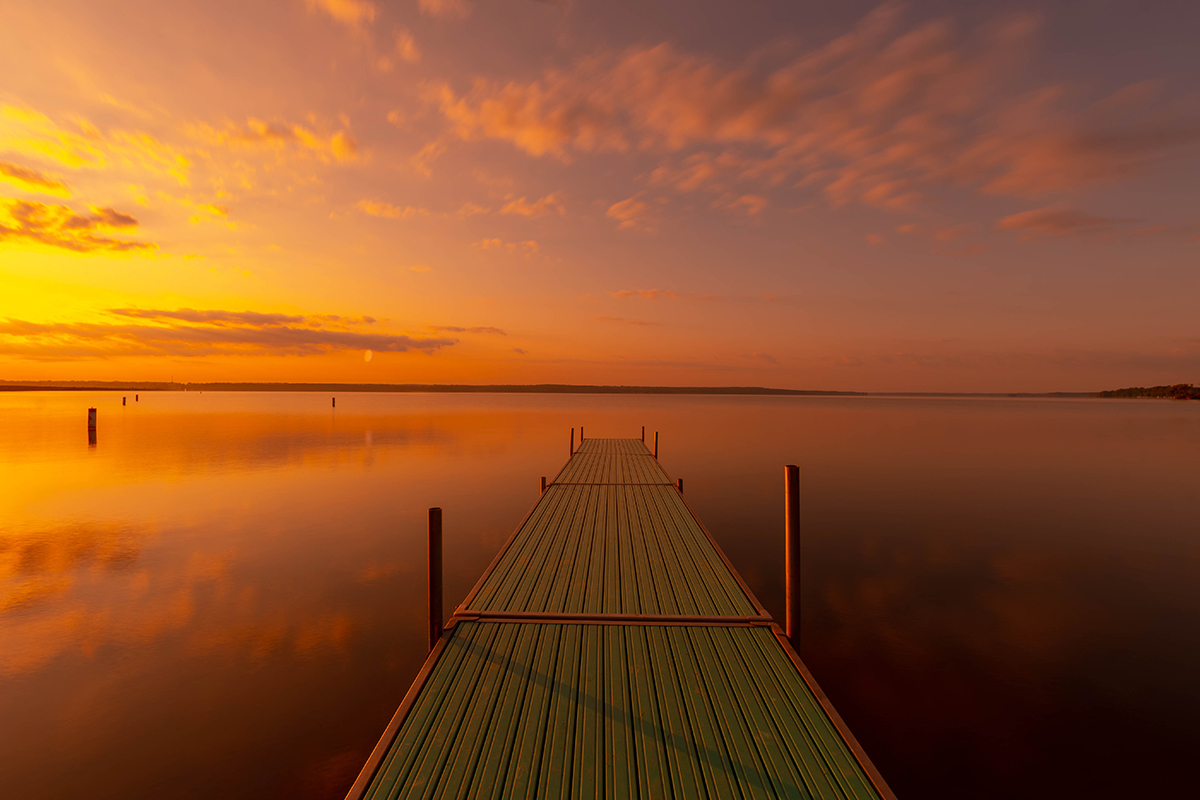New Perspectives, Close to Home
Rhonda Coe doesn’t let local lockdowns curb her creativity in photographing landscapes with the Tamron 10-24mm VC HLD wide-angle lens.
More Photo Tips | Video Gallery | Photo Gallery | Enewsletter sign-up
By Jenn Gidman
Images by Rhonda Coe
With the coronavirus pandemic keeping people from traveling far, Cleveland-area photographer Rhonda Coe has found herself in the same dilemma that other photographers are facing: taking pictures of many of the same landscapes she’s already photographed. “I’ll go to a waterfall near my home in Cleveland and there are already a million pictures of it on Instagram,” she says. “So now I’m trying to show that waterfall from unseen angles or perspectives that haven’t been shown yet, or putting my daughter in some of the photos as the subject.”
The Tamron 18-200mm was one of the earliest tools in Rhonda’s camera bag, but she found herself wanting to go just a bit wider when taking her landscape photos. “That’s when I picked up the Tamron 10-24mm VC HLD wide-angle lens,” she says. “I’m able to significantly change the perspective of my composition with the 10-24. Plus, other than when I’m doing long exposures or nighttime photography, I’m not much of a tripod user. Sometimes I can’t even fit a tripod into some of the spaces I’m squeezing into. The 10-24’s Vibration Compensation feature helps out a lot in that regard, allowing me to shoot at lower shutter speeds and still get the sharp images I’m looking for.”
Despite being hamstrung by the limitations of COVID-19, Rhonda has also tried to safely travel to surrounding states like Pennsylvania and West Virginia to find new landscapes to photograph. “You want to obviously keep social distancing at the top of your mind these days, but it is possible to still get out there and safely take pictures, especially if you seek out parks where there aren’t a lot of people to begin with,” she says. “I love opening up my eyes to locations I’m not used to visiting, and with that Tamron 10-24, I’m able to catch all of that brand-new scenery in my frame.”
Read on to see how Rhonda used the 10-24mm lens to capture some of her more recent landscape photos.
To see more of Rhonda Coe’s work, go to www.rhondacoe.com.
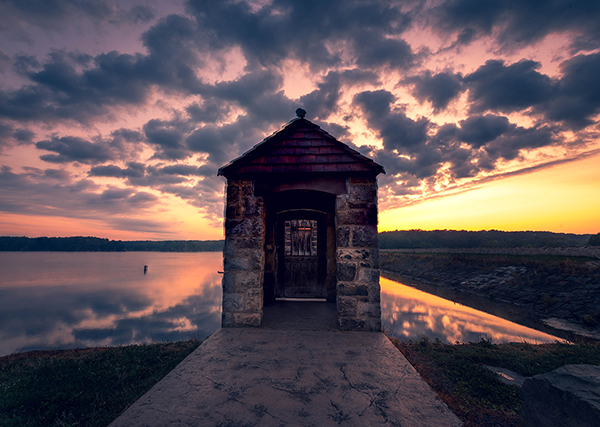
10-24mm (10mm), F/16, 1/6th sec., ISO 100
Click image to view larger
The Pymatuning Dam gatehouse is located in Jamestown, Pennsylvania, right over the Ohio border. I’d gone there because that area is known for its dark skies, and I wanted to get some Milky Way shots. The gatehouse wasn’t in the right position to have the Milky Way behind it, so I decided to head back the next morning for sunrise instead. The 10-24 allowed me to get close enough to make the gatehouse the prominent focal point in the frame, while still allowing me to capture the beautiful sunrise and reflections in the lake. I loved how the clouds made a “V” and appeared to disappear behind the gatehouse. That was one of the major reasons I decided to forget the rule of thirds and center the gatehouse in the middle. I didn't want to shoot too long of an exposure because I wanted the shapes of the clouds to remain in the shot.
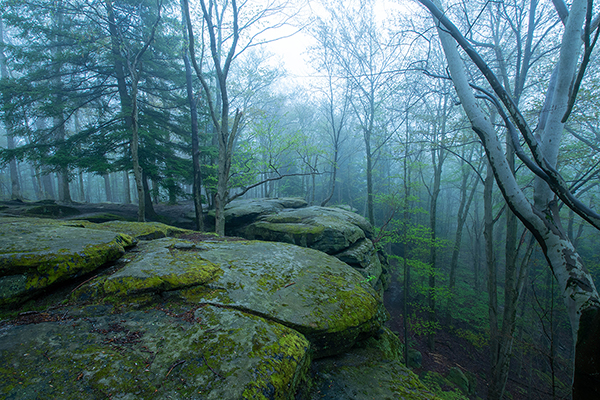
10-24mm (10mm), F/11, 1/5th sec., ISO 160
Click image to view larger
Virginia Kendall Ledges is part of Cuyahoga Valley National Park in Peninsula, Ohio. I headed out early one morning because I’d seen they were predicting thick morning fog. I wanted to be able to capture the whole scene, so I had the lens wide open at 10mm. This was a tight spot on uneven ground, so I took this shot handheld. I was pleased that the VC helped keep everything sharp and let me shoot at a low-enough shutter speed so I didn't underexpose the photo. I was also pleased there was no distortion with the tall trees with the lens at its widest.
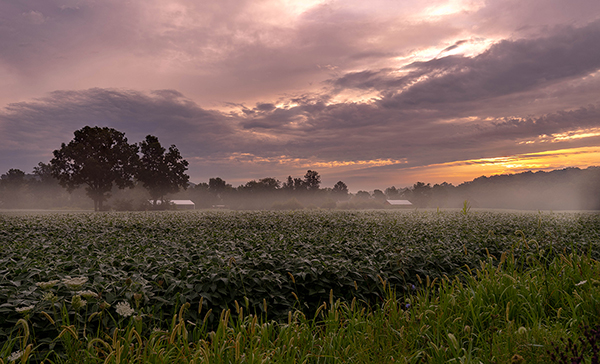
10-24mm (19mm), F/8, 1/160th sec., ISO 100
Click image to view larger
My daughter and I were headed to Mohican State Park in the early morning hours to find some waterfalls. On our way down a country road that leads into the park, I noticed the sunrise was becoming quite beautiful, with a layer of fog over the cornfields. I took this photo at 19mm to cut out some distractions on the right and left of the field.
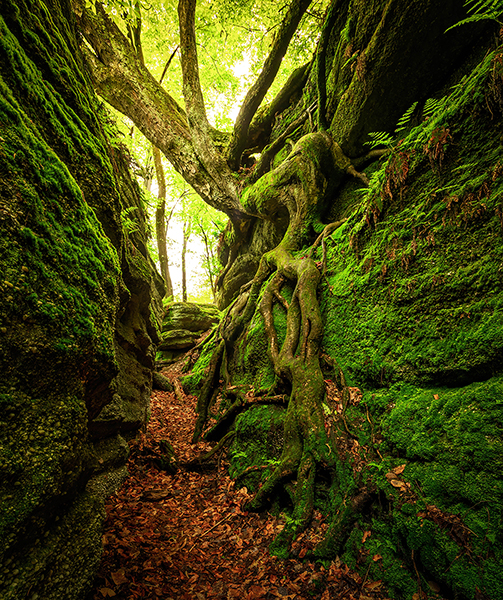
10-24mm (10mm), F/9, 1.3 sec., ISO 100
Click image to view larger
Nelson Ledges Quarry Park in northeastern Ohio is exactly how its name sounds, with many crevices and ledges that are pretty tight to get through. As we were walking down this path, I noticed the tree roots on the side of the ledge. I really wanted to draw the viewer's eye to the uniqueness of these roots. This was another handheld situation due to the tightness of the area. I stood pretty close to the base of the tree and kept the lens wide open at 10mm
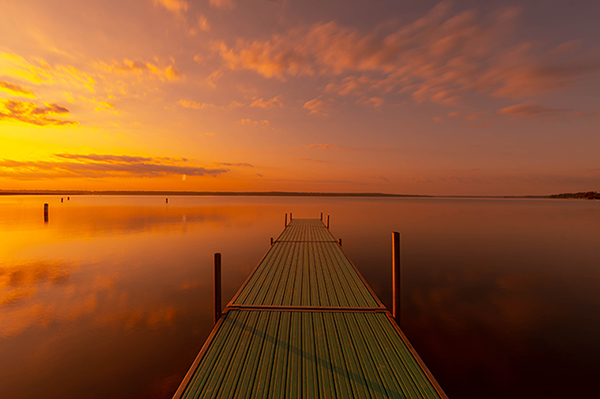
10-24mm (10mm), F/11, 1/160th sec., ISO 100
Click image to view larger
This shot was taken right after the gatehouse photo, when I was heading home. It was at the end of the beautiful sunrise, and I spotted this single dock on the beach. I loved the simplicity of the scene.
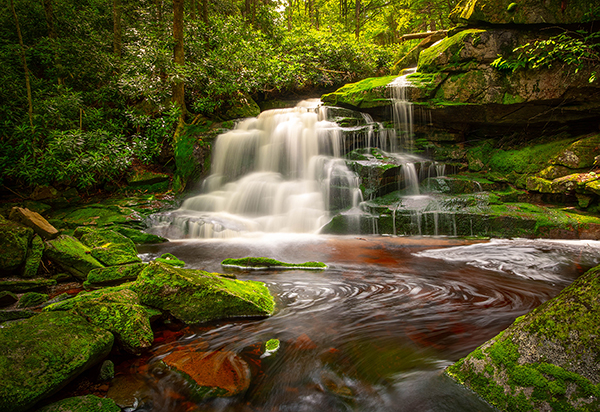
10-24mm (11.5mm), F/20, 13 sec., ISO 50
Click image to view larger
Elakala Falls is a series of four waterfalls that run down a mountain into a canyon in West Virginia’s Blackwater Falls State Park. This is the second tier of the waterfall, which is about 15 feet tall. I took this shot on a tripod while standing in the water at the base of the fall. I had the VC on for this shot, which I don't normally do when my lens is on the tripod, but the rush of the water was causing my tripod to shake. I had no neutral-density filters with me, so I had to put my ISO as low as it would go and increase my aperture as much as I could so I wouldn’t overexpose the shot.

10-24mm (10mm), F/4, 30 sec., ISO 2000
Click image to view larger
The Milky Way shot had quite a bit of light pollution under it, lending the sky a yellow glow. I thought it would look cool to use the leading line of the street (since it was also yellow), and since this shot was taken at about 1 a.m., there was no traffic in the park to worry about. I didn’t have to do any light painting at the scene because of the light pollution and the park lights that are visible from the left and right of the image.
More Photo Tips | Watch Videos | Learn More About Tamron Lenses | Photo Gallery
